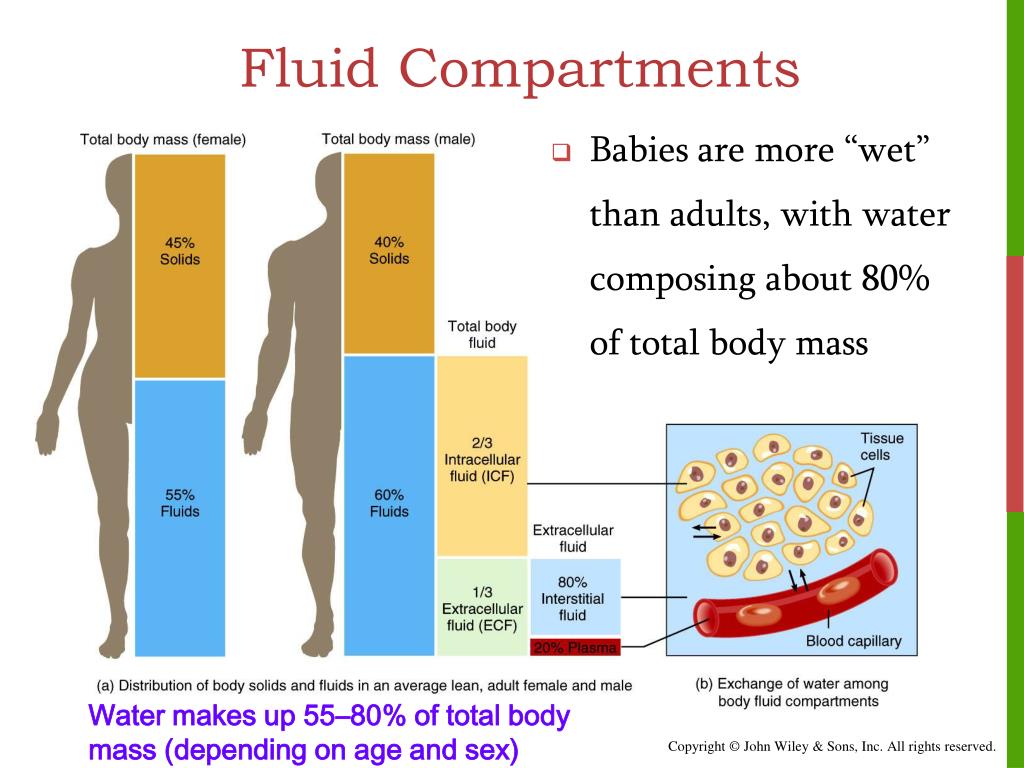
Chloride – the predominant anion in the extracellular fluid.Sodium – the osmotically active cation in the extracellular fluid.Major electrolytes in extracellular fluid:.Other electrolytes present but are comparatively at lower levels (than the intracellular fluid) are potassium, phosphate, and magnesium. In extracellular fluid, electrolytes that are abundant or in relatively high amounts are sodium, chloride, and bicarbonates. Extracellular fluid differs from intracellular body fluid in sodium, potassium, and protein content. Fat tissues tend to have less water than lead body mass.Īlmost 20% of the total body weight is an extracellular body fluid (Figure 2). Males have a higher amount of body fluid as compared to females as females have higher body fat. Figure 3: A representative image of the different types of fluid. Intracellular body fluid is composed of a high amount of potassium, phosphate, and magnesium while low amounts of bicarbonate, chloride, sodium, and protein (Figure 3). Intracellular body fluid is also involved in maintaining osmolarity via sodium-potassium pump wherein potassium ions are primarily intracellularly distributed. The majority of the chemical/metabolic reactions of the body occur in the cytoplasm or the intracellular body fluid. Figure 2: Distribution proportion of different types of fluid in different fluid compartments of the human body. Bodily fluids are distributed in different fluid compartments as shown in Figure 2. Intracellular fluid forms ~40% or 2/3rd of the body fluid. The intracellular fluid largely remains unchanged and does not undergo rapid changes or fluctuations. The fluid that is present inside the cell i.e., in the cytoplasm of the cell. Types of body fluids can be categorized based on the location: It is composed of water, dissolved ions, and other molecules.Įxamples of body fluids: amniotic fluid, aqueous humor, bile, blood plasma, breast milk, cerebrospinal fluid, cerumen, chyle, exudates, gastric juice, lymph, mucus, pericardial fluid, peritoneal fluid, pleural fluid, pus, saliva, sebum, serous fluid, semen, sputum, synovial fluid, sweat, tears, urine, vomit In humans, the intracellular fluid makes up 67% of the total body water composition. Intracellular fluid– the body fluid located within the cell or all cells of an organism.Transcellular fluid (the fluid filling up the spaces of chambers formed from the linings of the epithelial cells) is the least in terms of the amount.Interstitial fluid (the fluid filling up the spaces between cells) is the major constituent.Interstitial fluid, intravascular fluid, lymph, and transcellular fluid make up the extracellular fluid. It makes up about 26% of the total body water composition in humans. Extracellular fluid – the body fluid located outside the cell or cells of an organism.In humans, the body fluid can be classified into two major types according to the location in the body: Image Credit: Otsuka Pharmaceutical Co., Ltd.Ī body fluid refers to any fluid produced by a living organism. Figure1: Human body water percentage at different stages of life.

The maximum body fluid is present at the fetal development stage (~95%), which goes down to ~75% for an infant and eventually to ~50-60% in the adult stage (Figure 1).

The body fluid content of the body changes with the body’s development. What percent of your body is water? or what percentage of water is the human body? The human body is primarily made up of water and the water distributed in different parts of the body organs and tissues is what defines the body fluid.

Some example of body fluid includes blood plasma, tears, synovial fluid, sweat, and urine. The functions of water in the body include temperature regulation, moistening of tissues, transportation of essential nutrients, elimination of waste from the body, and lubricating different joints and tissues. The body fluid or the physiologic fluid is essential for various physiological processes and the maintenance of body homeostasis. Depending on the location of the body fluid, the composition and amounts vary. Apart from water, the body fluid is also composed of other molecules, such as electrolytes ( sodium, potassium, etc), metabolites (urea, glucose, carbon dioxide, oxygen), and proteins (albumin, hormones, amino acids, antibodies).


 0 kommentar(er)
0 kommentar(er)
